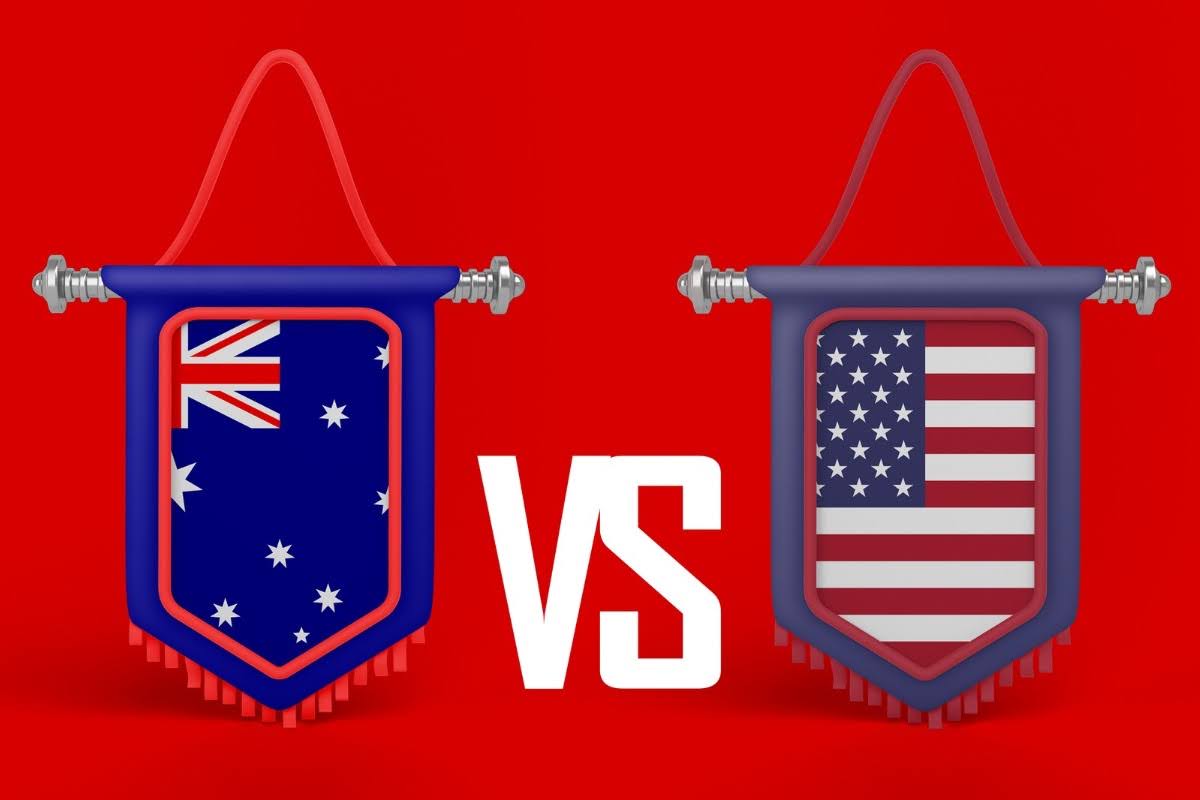Choosing where to pursue your higher education abroad is a significant decision, and selecting the right intake period can add another layer of complexity. That said, whether you are considering starting in the Fall or the Spring, each intake period offers its own benefits and challenges.
The Fall intake, which typically begins in September, often aligns with the start of the academic year. It offers a seamless entry into university life, with more opportunities for involvement in campus activities and early networking.
The Spring intake, on the other hand, starting around January, provides a mid-year entry point that can be advantageous if your timeline is more flexible.
But how do you decide between the spring and fall semesters? That’s what this guide on fall intake vs spring intake aims to resolve for you.
Through this guide, you’ll get to explore the various factors to consider when choosing between fall and spring intakes. Get ready to choose your ideal intake period in this comprehensive blog post on fall versus spring intake.
Choose your dream country
When do you want to study abroad?
What's your highest level of education?
Select you current city
How Leap will help you
Personalised University Shortlist
Express Applications with Quicker Admits
End-to-End Application Support
Key Highlights
Here's a table comparing key factors of what you’ll learn in this blog post on fall intake vs spring intake.
| Aspects | Fall Intake | Spring Intake |
| Fall vs Spring Intake: Top Universities | The broad range of courses and programs available. | A broad range of courses and programs are available. |
| Fall Intake vs Spring Intake: Commencement Period | September | January |
| Course Availability of Spring and Fall Semesters | Broad range of courses and programs available. | Limited course options compared to Fall. |
| Fall vs Spring Intake: Which is Better? | Better scholarship opportunities Better job opportunities | Less competition than FallFlexibility in the academic schedule |
What is the Meaning of Intake in University Abroad?
Unlike the Indian education system, which typically offers a single intake per year, universities abroad often offer multiple intake periods within an academic year. These intakes allow students to apply and begin their studies at various times throughout the year.
For instance, top universities in countries like the US, the UK, Australia, Canada, and Ireland offer at least 2 main intakes, which are as follows:
- One in the Fall
- Another in the Spring
Please note: Some institutions might even offer additional intakes during the Summer.
Study Abroad Intakes: Fall and Spring Intake

Most universities and colleges abroad offer two main intakes each academic year: Fall and Spring. The Fall intake typically begins in September and ends in December, while the Spring intake starts in January and ends in May.
There are two main reasons for this dual intake system, which are as follows.
- Accommodating many students in a single semester can be challenging, with thousands of applications received annually. Hence, universities need to manage their capacity effectively, thus offering two intake periods.
- Not all students can apply for the fall intake for various reasons, such as application delays or program availability. Hence, by providing 2 intakes, universities offer an alternative opportunity for those who could not apply earlier.
Each intake period has its own deadlines for submitting the applications and may offer different course options. Choosing the one that best aligns with your academic goals is crucial.
Here is the fall and spring intake table with important information.
| Intakes | Commencement Period | End Period |
| Fall | September | December |
| Spring | January | May |
Now that you know the different kinds of intakes, read on to understand the fall and spring semesters!
Also Read: Canada Intakes 2025: Fall, Winter, Spring (Summer) Intakes
What is Fall Intake?
The Fall intake is a primary admission period offered by the top universities worldwide. In many countries, it aligns with the start of the academic year.
The Fall intake is the most popular and widely accepted admission period for universities in the US. Similarly, this intake is known as the Autumn or September intake in the UK, and it is also the primary admission period for most universities there.
Students often prefer fall intake for the following reasons.
- Aligns with the start of the academic year in many institutions. This provides ample time to begin your studies in sync with the traditional academic schedule.
- This intake offers numerous courses and programs, providing numerous student options.
What is Spring Intake?
The Spring intake is another major admissions period offered by prestigious universities worldwide. However, fewer courses are available than in the fall intake.
The spring intake in the US is the second-largest university admission period, presenting its unique benefits for prospective Indian students. It provides several advantages, including opportunities for internships and research projects.
In the UK, the spring intake, also known as the Winter intake, is especially attractive for international students who may have missed the autumn intake deadlines or require additional time to arrange visas.
Students often choose the Spring intake for the following reasons.
- Ideal for those who missed the Fall intake or wish to begin their studies later in the academic year.
- Allows you to join ongoing academic programs, benefiting from the courses and activities offered during this period.
Also Read: January Intake in UK 2024-2025: Deadlines & Best Universities
Fall Intake vs Spring Intake: Important Features
Now that you have answered the major question, “What are the fall and spring semesters?” Understanding that each intake period offers distinct advantages and considerations is important.
Understanding the features of fall and spring intake can help you decide when to start your studies abroad.
Here’s a table on the fall intake vs spring intake, highlighting the important features of both semesters.
| Features | Fall Intake | Spring Intake |
| Timing | Starts in late August or early September Ends in late December | Starts in January Ends in May |
| Popularity | Most popular and widely accepted. | Second-largest admission intake period. |
| Alignment with Academic Calendar | Aligns with the start of the academic year. | Does not align with the traditional academic year. |
| Class Sizes | Relatively larger | Typically smaller |
| Course and Programme Availability | Broad range of courses and programs available. | Limited course options compared to Fall. |
| Ideal For | Students who prefer to start at the beginning of the academic year. | Students who need more: Time to prepare Save money Arrange visas |
Fall Intake vs Spring Intake: Comparison
Did you know? In the US, application deadlines for the Fall intake usually range from May to September of the previous year, offering you ample time to prepare.
Unlike the Fall admissions, the Spring intake provides an opportunity for students like you with prior commitments or those needing additional time before starting their studies. Similarly, applying for the Spring and Fall semesters can differ significantly across popular countries, including the US and the UK.
Here is the table on the Fall intake vs Spring intake across various important factors.
| Factors | Fall Intake | Spring Intake |
| Universities | Many top universities offer this intake. | Fewer top universities Thorough research needed |
| Top Courses | Computer Science Engineering Economics | Engineering Financial Accounting Law |
| Acceptance Rate | Higher due to larger class sizes. | Lower as compared to Fall. |
| Job Opportunities | More favourable as job opportunities open up during the fall semester. | Less favourable |
| Assistantships | More opportunities for on-campus jobs and internships. | Fewer, many positions are filled in the Fall. |
| Extracurricular Activities | More time for extracurricular activities. | Fewer opportunities for deep involvement. |
| Readiness | Aligns with May/June graduation More prep time | Suitable if ready to start in January Less prep time |
Please Note: Your ability to obtain a visa is determined by the university you attend, your financial capacity, and your ability to demonstrate that you will not overstay or settle illegally in the country rather than by the intake period.
Benefits of Fall Semester

Did you know that most of the top universities in the US set application deadlines for the Fall intake between November of the previous year and February of the intake year? For instance, if you plan to start a course in the Fall of 2025, you generally apply between November 2024 and February 2025.
While the Fall intake is the preferred choice for many international students and is highly competitive, there are several advantages to starting in the fall semester. Read on to know the top benefits.
- More Scholarship Opportunities: Many universities offer scholarships specifically for Fall intake, which can help significantly reduce your financial burden.
- Internship and Job Opportunities: Starting in the Fall aligns with the job market in the top countries, including the US and the UK, giving you a head start in exploring job opportunities.
- Pleasant Weather: Fall weather, specifically in the US, is generally pleasant, making it a great time to explore the campus and settle into your new environment.
- More Orientation Programs: Comprehensive orientation programs help you adjust to the academic aspects of studying at your chosen university.
Benefits of Spring Semester
While the Spring intake is the second-largest intake in both the U.S. and the UK, it offers its own set of advantages. Here are some of the top benefits of the spring semester.
- Less Competition: Spring intake is an ideal option for students like you who may have missed fall deadlines or need additional time for preparation.
- More Flexibility: Spring intake provides flexibility for students with academic or personal commitments.
- Internship and Research Opportunities: Although Fall students benefit from early internship opportunities, Spring intake allows you to access unique internship and research opportunities during your second summer after completing the second semester.
- Cultural Integration: With a smaller class size, the Spring intake provides a smoother transition into campus life and more opportunities to build connections.
Fall Intake vs Spring Intake: Top Universities
As an Indian student, you'll be glad to know that several universities abroad offer both spring and fall intakes. When comparing the spring and fall semesters, it's essential to consider the timing and the prestigious programs and courses they offer.
In the upcoming section, you will learn about the top universities offering fall and spring intakes. This will provide you with valuable knowledge of the options available for the top universities in two major countries, namely the UK and the US.
Top Universities for Fall Intake
The Fall intake is the most popular admission period for higher education applicants in the USA and the UK. Most universities that offer a Fall session have similar application deadlines, making it a common choice for many students.
Here is a list of the popular universities in the US and the UK to start your research.
| Top Universities for Fall Admissions | Country | QS World University Rankings 2025 |
| Massachusetts Institute of Technology (MIT) | US | 1 |
| University of Oxford | UK | 3 |
| Harvard University | US | 4 |
| University of Cambridge | UK | 5 |
| Stanford University | US | 6 |
Concerned about university fees to study for these top universities for fall admissions in the USA? Ease your worries with Leap Finance. We offer collateral-free loans for US education with interest rates starting at just 11%. Start your loan application process here now!
Also Read: Fall/September Intake in UK 2025: Timeline & Universities
Top Universities for Spring Intake
The Spring intake is the second most popular admission period for higher education applicants in the USA and the UK. Applying for the spring semester in the USA might boost your chances of acceptance, as the student application size is typically smaller and faces less competition than the Fall intake.
Here is a list of popular universities in the US and the UK that offer Spring intakes to help you start your research.
| Top Universities for Spring Admissions | Country | QS World University Rankings 2025 |
| Massachusetts Institute of Technology (MIT) | US | 1 |
| Imperial College London | UK | 2 |
| University of Pennsylvania | US | 11 |
| The University of Edinburgh | UK | 27 |
| University of Manchester | UK | 34 |
No matter the intake you opt for, the prestigious universities in the US and the UK make it a top choice for international students. Are you planning to begin your academic journey in the US or the UK?
LeapScholar is here to support you every step of the way. Schedule a free call today to learn your best options for an affordable education in the UK and the US.
Also Read: Spring (January) Intake in USA 2024-2025: Deadline & Universities
Fall vs Spring Intakes: Which is Better for Indian Students?
Now that you know universities abroad offer semester-based course curricula throughout the year, you might wonder which semester to choose for your studies. Deciding between the Fall and Spring intakes can be a significant decision, and there have been numerous questions and debates about which period is best.
Well, what is most essential is to consider your timeline, preparation, and what fits best with your educational objectives as you make your decision. We have compiled a list of the key factors to consider when making your decision.
- Academic Readiness: The Fall intake may be the best option if you’re academically prepared to start your studies.
- Application Deadlines: Evaluate whether you can meet the application deadlines and fulfil all admission requirements for your chosen intake on time.
- Personal Commitments: Consider any personal or professional commitments that could affect your chances of starting in either of the intakes.
- Course Availability: You must check the availability of courses and programs in both intakes to ensure they align with your academic goals.
- Visa and Documentation: Ensure you have ample time to prepare and secure your visa and other necessary documentation for your chosen intake.
To Conclude
Deciding for the Fall intake vs Spring intake for higher education is a significant choice for Indian students. This decision can impact your academic journey and your personal and professional development.
In many countries, the fall intake starts with the academic year offers a wider range of courses and aligns with job market cycles. The Spring intake, however, is less competitive and provides flexibility for those needing extra time to prepare for the admission exam.
Ultimately, your decision will depend on your academic interests, financial situation, and personal preferences. Carefully evaluating these factors will help you select the ideal intake period to achieve your educational objectives.
At Leap Scholar, we support your journey with valuable resources, including university selection, study abroad guides, visa assistance, and scholarship information. Book a free counselling session today!
Frequently Asked Questions
-
Q. What is the fall and spring semester?
Ans. The Fall semester starts in late August or early September and ends in December, marking the beginning of the academic year. On the other hand, the Spring semester begins in January and ends in May, offering a secondary intake period for students who missed the Fall semester or need more preparation time.
-
Q. Is the spring semester in the USA worth applying for?
Ans. Yes, the Spring semester can be a great option. It often has less competition than the Fall semester, allowing for higher chances of acceptance. Additionally, it provides flexibility for students who need more time before starting their studies or have other personal commitments.
-
Q. Which is better - spring intake vs fall intake?
Ans. The choice between Spring and Fall intake depends on your individual needs:
Fall Intake: Ideal if you prefer starting with the academic year, want a wider range of courses, and seek more scholarship opportunities.
Spring Intake: Suitable if you need more preparation time, missed fall deadlines, or prefer a less competitive admission process. -
Q. What is fall and spring in the US?
Ans. The Fall or September intake, starting in September, is the primary admission period and receives the highest number of applications in the US. The Spring intake, starting in January, is the secondary major intake period for students.
-
Q. What are the disadvantages of spring intake?
Ans. Some of the significant disadvantages of spring intake are as follows.
There may be a limited selection of courses compared to the Fall intake.
The smaller class size can mean fewer opportunities for networking and extracurricular activities. -
Q. Which intake is best for studying and applying to US universities?
Ans. The Fall intake offers numerous benefits, making it an appealing choice for students pursuing higher education in the USA. It provides a broad range of opportunities, including a diverse selection of courses, more scholarship options, and alignment with the academic and job market cycles.
-
Q. Is fall better than spring semester?
Ans. Whether Fall is better than Spring depends on your situation. The Fall Semester generally offers a broader range of courses and aligns with the traditional academic year. It also provides more extracurricular activities and better job market alignment. Spring Semester can be better suited for you if you need more preparation time.
-
Q. What are the advantages of fall intake?
Ans. Some of the major benefits of fall intake are as follows.
-More courses and programs are available.
-Greater access to scholarships and financial aid.
-Syncs with the traditional academic year, leading to a smooth start to the academic year -
Q. What is fall intake also known as?
Ans. Fall intake is often referred to by different names depending on the region. In many countries, including the UK, the Fall semester is commonly called the Autumn intake, reflecting the season in which it starts. It is also referred to as September Intake, the typical start month of the Fall semester.
-
Q. How many intakes are there in the USA for international students?
Ans. In the USA, there are generally two main intakes for international students.
Fall Intake: Starts in late August or early September; it is the primary intake and the most popular among students.
Spring Intake: Begins in January, it serves as the secondary major intake for those who may have missed the Fall semester. -
Q. How early should one apply for the intakes in USA?
Ans. For the Fall intake, it is advisable to apply between November of the previous year and February of the intake year. For the Spring intake, applications are typically accepted from May to September of the preceding year. Applying early allows ample time for preparation and meeting application deadlines.
-
Q. When is spring intake in the US?
Ans. The Spring intake in the US generally begins in January and concludes in May. It follows the Fall semester and serves as the second major admission period for the academic year. Applications for this intake period typically open from May to September of the previous year.















Have Questions? Get Guidance to reach your Dream University
Connect with India's finest counsellors and biggest study abroad community.
Get Guidance